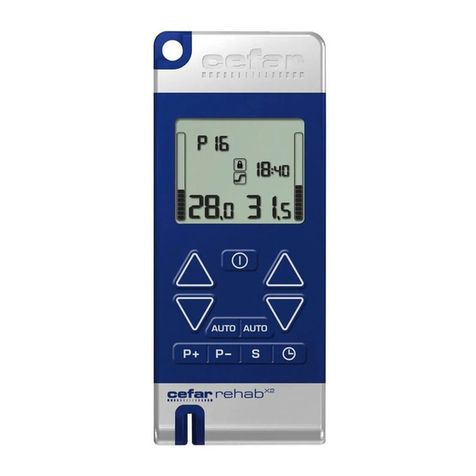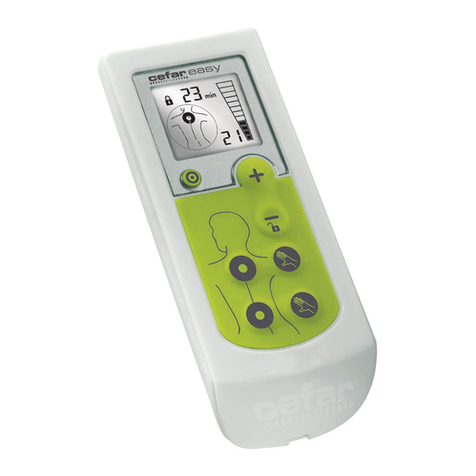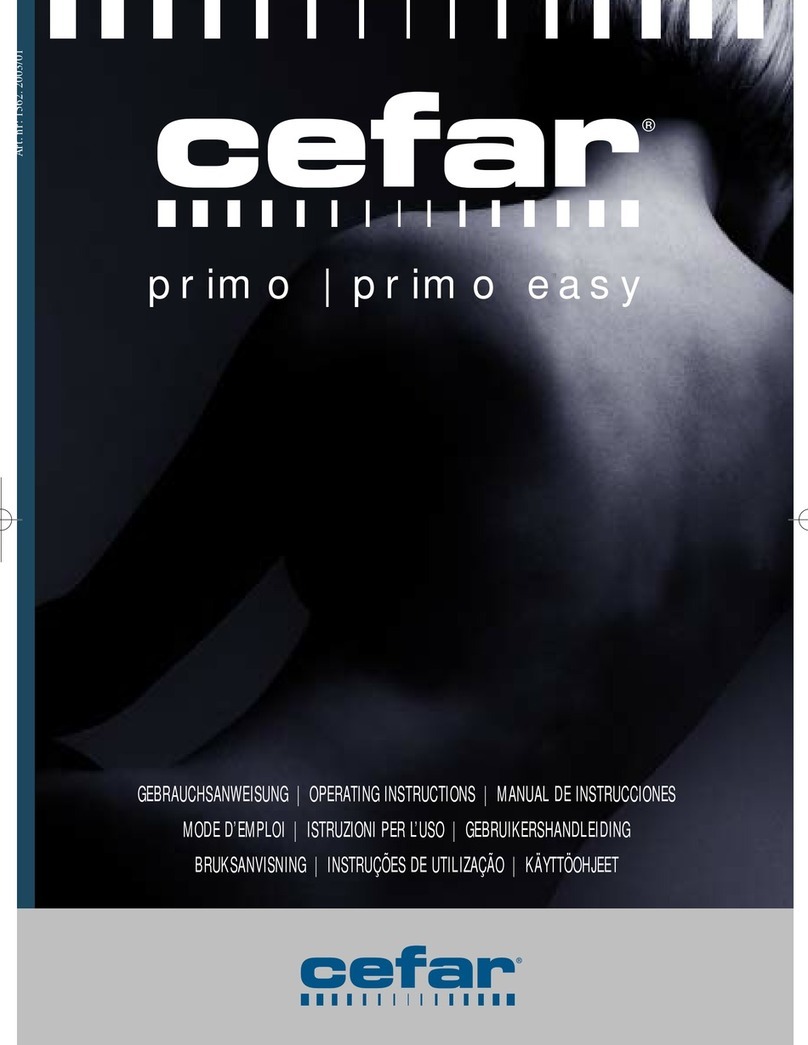
Inspect the equipment prior to use.
Use the stimulator only as stated in the operating instructions.
Only Cefar accessories should be used with the stimulator
WARNING!
People with implanted electronic equipment, such as pacemakers and intracardiac defibrillators, must not be treated
with TENS.
Pregnant women should not be treated with TENS during the first trimester (12 weeks).
Due to the location of the carotid arteries and the carotid bodies, do not stimulate the front or sides of the neck, since
a drop in blood pressure can occur.
Stimulation should not take place while the user is connected to high-frequency surgical equipment. It may cause
burn injuries on the skin under the electrodes, as well as problems with the stimulator.
Do not use the stimulator in the vicinity of shortwave or microwave therapy equipment, since this may affect the
output power of the stimulator.
Keep the stimulator out of reach of children.
CAUTION
Stimulate with precaution while treating angina pectoris.
The electrodes are only to be placed on healthy skin. Avoid skin irritation by ensuring that good contact is achieved
between electrodes and skin.
Do not place electrodes directly over the uterus or connect pairs of electrodes across the abdomen if you are preg-
nant. The reason is that, theoretically, the current could affect the foetus’s heart (although there are no reports of it
being harmful).
If skin irritation should occur, treatment should be temporarily discontinued. If problems continue, contact your
health care provider. Hypersensitivity to tape and gel can occur in isolated cases. The problem usually disappears
when the tape or gel is changed to another type.
Do not use electrodes with a surface < 5 cm2, as there will be a risk of suffering a burn injury. All Cefar electrodes fulfil
this requirement. Caution should always be exercised with current densities > 2 mA/cm2.
Observe caution when using electrotherapy at the same time as the patient is connected to monitoring equipment
with body worn electrodes. The stimulation might interfere with the signals to the monitoring equipment.
Never open the battery cover during stimulation in order to avoid electrical shock.
Turn off the stimulation before removing the electrodes from the skin. If an electrode comes off, turn off the stimula-
tion before picking it up. Getting electrical stimulation through the fingers is unpleasant but not harmful.
Observe caution when stimulating in the immediate vicinity of cellular phones that are switched on, since this may
affect the output power of the stimulator.
Observe caution if you use the stimulator while driving, unintentional stimulation changes might extract focus from the
driving and create a hazardous situation.
•
•
•
•
•
•
•
•
•
•
•
•
•
•
•
•
•
•
•
3. PRECAUTIONARY MEASURES
Supplied by EME Services Ltd































